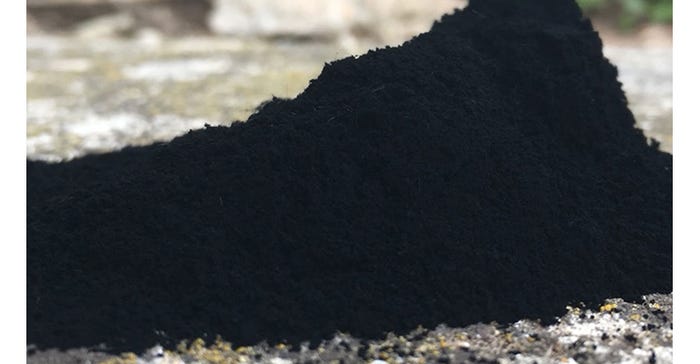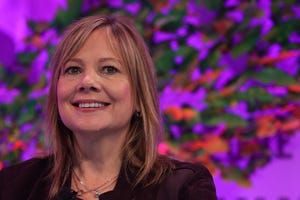Empowering Energy Storage: How Graphene Transforms Batteries
Hydrograph’s chief scientist shows how the properties of this amazing material, graphene, enhance Li-ion, Li-air, and Li-sulfur battery capabilities.
June 15, 2023

Ranjith Divigalpitiya, Chief Science Officer, HydroGraph
In our rapidly evolving world, the quest for efficient and long-lasting energy storage systems is more crucial than ever. Lithium-ion (Li-ion) batteries have become the backbone of portable electronics and electric vehicles, but their limitations in terms of energy density and lifespan are driving scientists to seek innovative solutions. Graphene, a remarkable material with exceptional properties, is emerging as a game-changer in the battery industry.
Discovered in 2004, graphene is a single layer of carbon atoms arranged in a honeycomb lattice, making it the thinnest and strongest material ever known. Its exceptional conductivity, flexibility, and high surface area make it an ideal candidate for improving battery performance. In this article, we will explore how graphene can revolutionize Li-ion, Li-air, and Li-sulfur batteries, paving the way for a sustainable and energy-rich future.
Graphene and Li-ion Batteries
Let's begin by examining how graphene can enhance the performance of Li-ion batteries, the workhorses of modern energy storage.
Boosting energy density: Graphene possesses an astonishingly high surface area and excellent electrical conductivity. By incorporating graphene into the electrodes of Li-ion batteries, we can create myriad pathways for lithium ions to intercalate, increasing the battery's energy storage capacity. This means longer-lasting power for our smartphones, laptops, and electric vehicles, allowing us to stay connected and mobile for extended periods.
Rapid charging and discharging: Graphene's remarkable conductivity enables the swift movement of electrons within a Li-ion battery. This facilitates faster charging and discharging rates, minimizing the time spent waiting for our devices to recharge. Imagine being able to power up your phone in a matter of minutes rather than hours!
Prolonged cycle life: One of the drawbacks of traditional Li-ion batteries is their limited cycle life. Over time, the battery's capacity diminishes due to electrode degradation. However, incorporating graphene into the battery's structure helps mitigate this issue. Graphene's mechanical strength and chemical stability act as protective layers on the electrodes, preventing degradation and extending the battery's lifespan. This translates to longer-lasting and more cost-effective energy storage solutions.
Graphene and Li-Air Batteries
While Li-ion batteries have revolutionized portable energy, researchers are actively exploring new frontiers such as Li-air batteries. Graphene plays a pivotal role in improving the performance and viability of these promising energy storage systems.
Unleashing high energy density: Li-air batteries, also known as lithium-oxygen batteries, offer an even higher theoretical energy density than Li-ion batteries. By leveraging graphene's unique properties, researchers are developing cathode structures that facilitate efficient oxygen reduction and evolution reactions. This enables Li-air batteries to store significantly more energy, making them ideal for applications such as electric vehicles and renewable energy storage systems. Imagine an electric car with a longer range or a solar farm with superior energy storage capabilities!
Ensuring stability and reliability: The stability of Li-air batteries is a critical factor for their practical implementation. Graphene's mechanical strength and chemical stability can mitigate the challenges associated with the oxygen reduction and evolution reactions, preventing electrode degradation, and improving the battery's overall reliability. This brings us closer to the realization of Li-air batteries as a sustainable and efficient energy storage option.
Graphene and Li-Sulfur Batteries
Another promising energy storage technology is Li-sulfur batteries. Graphene offers several advantages for improving the performance of these batteries, making them a viable alternative to traditional Li-ion systems.
Supercharging energy density: Li-sulfur batteries have an exceptionally high theoretical energy density but face challenges related to sulfur's low electrical conductivity and polysulfide dissolution. These issues can be addressed by integrating graphene into the battery's electrode structure. Graphene acts as a conductive scaffold, providing pathways for electrons and enhancing the battery's overall energy storage capacity. This advancement can pave the way for lighter and more powerful energy storage systems in various industries.
Tackling degradation and improving lifespan: Li-sulfur batteries suffer from sulfur electrode degradation, which reduces their cycle life. However, graphene's protective properties can mitigate this degradation by preventing the dissolution of polysulfides and providing a stable framework for the electrodes. The result is improved battery lifespan and enhanced stability, ensuring that Li-sulfur batteries remain viable options for large-scale energy storage applications.
An essential component found in all lithium batteries and other energy storage devices is the current collector. Its primary function is to facilitate the movement of electrons into and out of the battery for external applications. Typically composed of thin aluminum and copper foils, current collectors have not received as much attention as the active electrode materials in energy storage devices.

A considerable portion of current collectors used today are coated with carbon to safeguard against electrochemical corrosion. However, recent research has demonstrated that coating metal-foil current collectors with graphene-like carbon or pure graphene, instead of traditional carbon black coatings, can greatly enhance cell performance. Graphene-like carbon, being approximately one hundred times thinner than conventional carbon black coatings, not only reduces impedance but also increases the energy density of the battery. Since cell impedance is directly responsible for energy loss in batteries, graphene coatings offer significant benefits.
Currently, graphene is more expensive than carbon black, making it viable only for high-end, high-performance batteries. However, as graphene technologies advance and enter large-scale production, more battery applications will be able to take advantage of these benefits.
Since the introduction of graphene, three significant challenges have hindered its widespread use in various applications. These issues include the absence of scalable manufacturing methods, inconsistent production quality, and high costs. However, recent advancements in the market have shown promising developments in all these areas. Innovative and environmentally sustainable manufacturing technologies have emerged to tackle these challenges head-on, leading to significant progress in addressing these concerns.
Graphene's remarkable properties are transforming the landscape of energy storage. By incorporating graphene into Li-ion, Li-air, and Li-sulfur batteries, we can achieve higher energy densities, faster charging rates, extended cycle lives, and enhanced stability. These advancements hold the promise of powering our smartphones, laptops, electric vehicles, and renewable energy systems more efficiently and sustainably.
As researchers continue to unlock graphene's potential and refine its applications, we move closer to a future with cleaner, longer lasting, and more powerful energy storage solutions. From powering electric cars with extended ranges to enabling renewable energy integration on a massive scale, graphene is propelling us toward a sustainable and energy-rich future. With each breakthrough, we embark on a journey toward a cleaner and more prosperous world.
Ranjith Divigalpitiya is Hydrograph’s graphene materials expert focused on commercializing graphene and carbon-like materials. In addition, Ranjith leverages his vast battery expertise as he works on R&D for battery applications at Hydrograph. He currently heads up Canadian R&D.
You May Also Like



